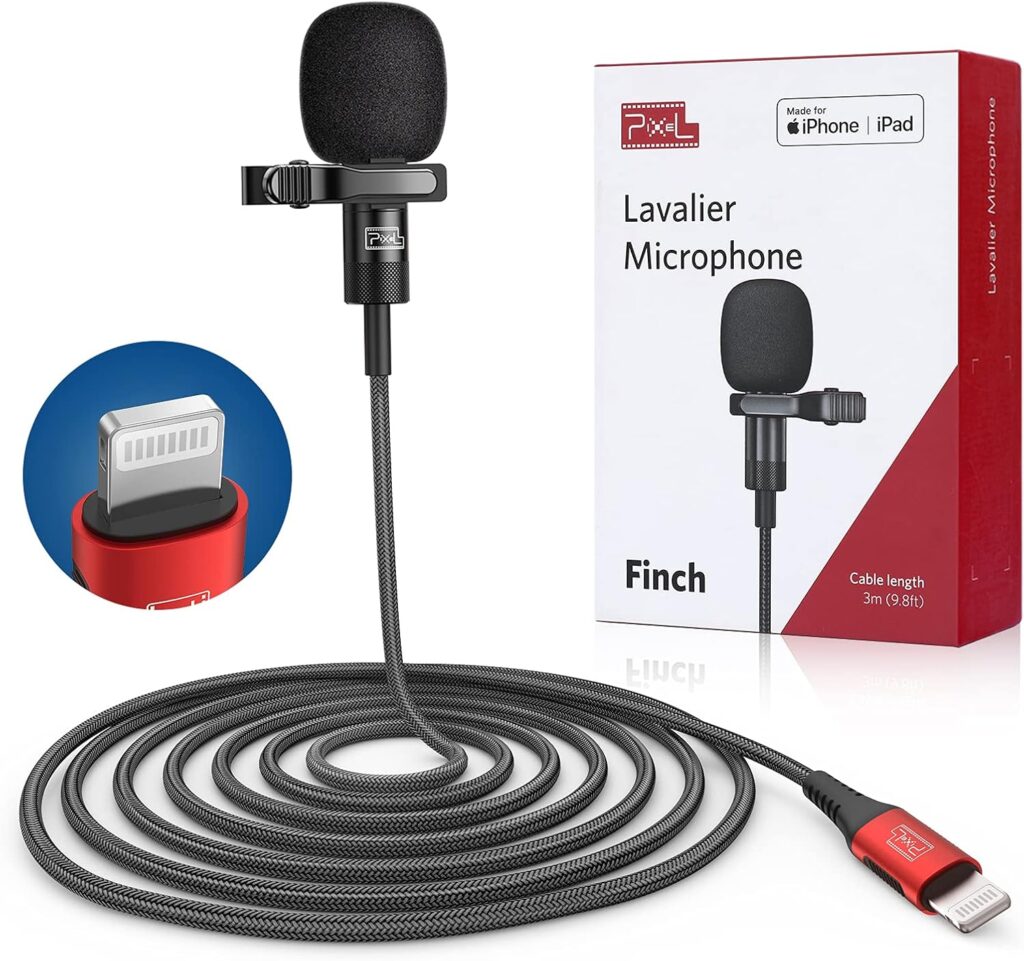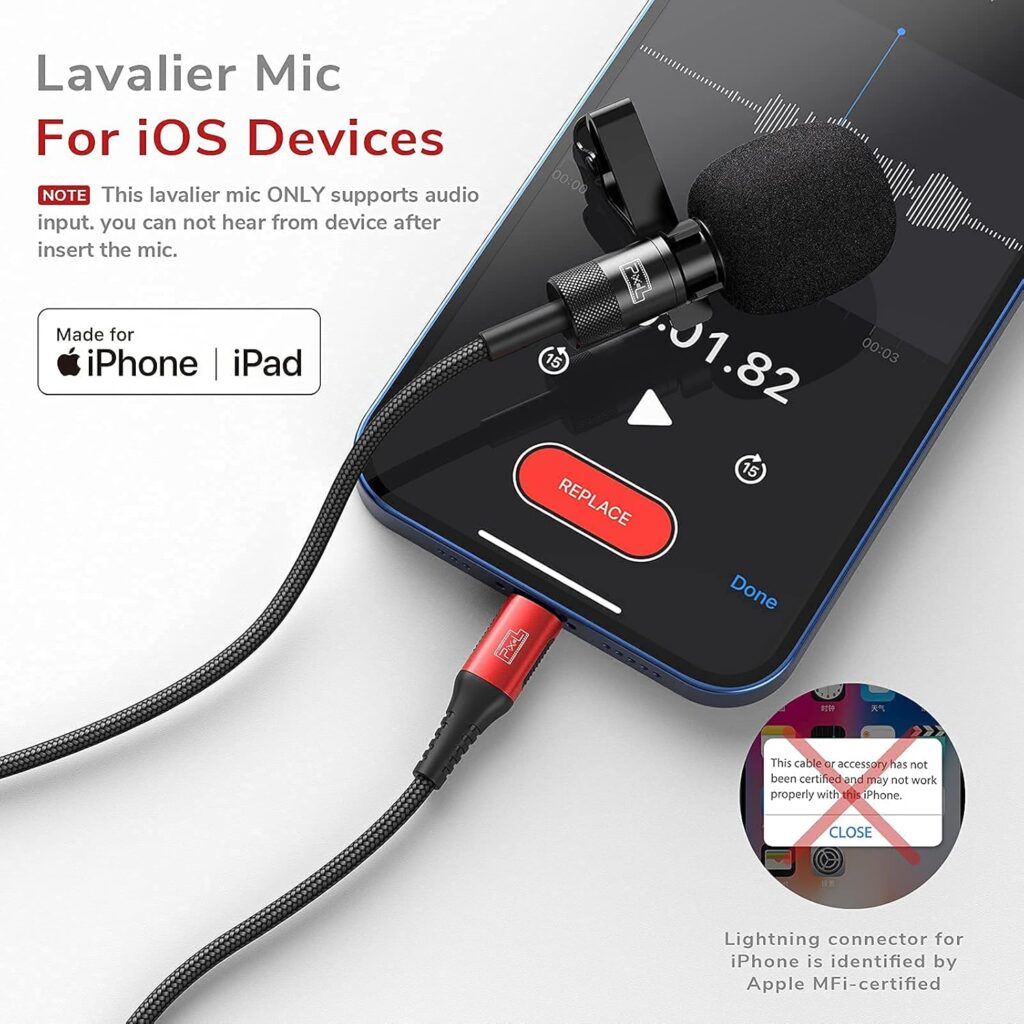Pixel Finch Lavalier Review
In the ever-evolving world of content creation, audio quality can make or break a project. Whether you’re vlogging on TikTok, recording a podcast, or filming an interview with your iPhone, a reliable microphone is essential. Enter the Pixel Finch Lavalier Microphone—a compact, affordable option designed to elevate your audio game without breaking the bank. Marketed as a plug-and-play solution for iOS and other devices, it promises decent sound quality, sturdy build, and ease of use. But does it deliver? In this review, we’ll dive into the nitty-gritty of the Pixel Finch Lavalier, exploring its features, performance, and whether it’s worth your investment in 2025.
Pixel Finch Lavalier Review
The Pixel Finch Lavalier Microphone is a wired, clip-on microphone designed primarily for mobile recording. Produced by Pixel, a company known for creating budget-friendly photography and audio gear, the Finch targets creators who want better sound than their device’s built-in mic without the complexity of professional setups. It comes in multiple versions, including one with a Lightning connector for iPhones and iPads (Apple MFi-certified), a USB-C variant for Android and newer devices, and a 3.5mm option for broader compatibility.
Priced typically under $50 (depending on the retailer and connector type), the Finch positions itself as an entry-level lavalier mic. It’s marketed for vlogging, interviews, YouTube videos, and casual recordings, boasting an omnidirectional condenser design, a long braided cable, and a durable metal build. But affordability often comes with trade-offs, so let’s unpack what this little mic has to offer.
Design and Build Quality
First impressions matter, and the Pixel Finch doesn’t disappoint in the looks department—at least for its price range. Out of the box, you’re greeted with a small carrying pouch emblazoned with the Pixel logo, a thoughtful touch for portability. The microphone itself feels surprisingly premium, with a metal body and an alligator clip that’s also metallic, giving it a robust vibe. Weighing just 0.32 ounces (9 grams) and measuring about 40mm long by 11mm wide, it’s unobtrusive enough to clip onto a shirt without drawing attention.
The cable is where the Finch stands out. Available in lengths ranging from 6.6 feet (2 meters) to 10 feet (3 meters) depending on the model, it’s wrapped in a nylon braid rather than the typical rubber coating. This not only adds durability—Pixel claims a 12,000+ bend lifespan—but also reduces tangling and feels soft to the touch. The connector (Lightning, USB-C, or 3.5mm) is sturdy, with some versions featuring nickel-plated contacts for corrosion resistance and a glossy finish for aesthetic appeal.
However, the design isn’t flawless. The windscreen, a small foam cover meant to reduce wind noise and plosives, feels flimsy and has been noted to pop off easily in some user reviews. While the metal construction is a plus, the mic’s size might be a tad bulky compared to sleeker competitors like the Rode Lavalier II. Still, for a budget mic, the Finch’s build quality punches above its weight.
Features and Specifications
The Pixel Finch is an omnidirectional condenser microphone, meaning it picks up sound equally from all directions. This makes it ideal for scenarios where you’re moving around or don’t need to isolate sound from a specific source. Here’s a breakdown of its key specs:
- Transducer: Electret Condenser
- Polar Pattern: Omnidirectional
- Frequency Range: 50Hz–20kHz
- Sensitivity: -36dB ± 3dB
- Signal-to-Noise Ratio: ≥60dB SPL
- Cable Length: 6.6–10 feet (model-dependent)
- Weight: 9 grams
- Connector Options: Lightning (MFi-certified), USB-C, 3.5mm
The mic requires no batteries, drawing power directly from your device via plug-in power. It includes a noise filter and cancellation chip to reduce background noise, and the Lightning version is certified by Apple’s MFi program, ensuring compatibility and safety with iOS devices. No app is needed—just plug it in, and you’re ready to record.
Performance: Sound Quality and Real-World Use
Sound quality is the heart of any microphone review, and the Pixel Finch delivers a mixed bag. Let’s start with the positives: compared to the built-in microphone on an iPhone 12 or similar devices, the Finch offers a noticeable improvement. In a controlled indoor setting with minimal ambient noise, it captures clear, loud vocals with decent mid-range presence. The bass is present but not overpowering, and the high-end adds a touch of clarity, though it’s not as crisp as pricier lavaliers.
For vlogging or casual recordings, this performance is more than adequate. The long cable allows flexibility—clip it to your shirt, plug it into your phone, and move around without worrying about pulling the connector loose. The omnidirectional pattern ensures your voice remains consistent even if you turn your head or shift positions, making it forgiving for beginners.
However, the Finch has limitations. In quiet environments, self-noise becomes apparent—a common issue with budget condenser mics. It’s not as pronounced as some ultra-cheap alternatives, but compared to professional options like the Tram TR50 or DPA lavaliers, the Finch’s noise floor is noticeable. Outdoors, wind noise can be an issue despite the included windscreen, which isn’t as effective as thicker deadcats found on higher-end mics. In noisy settings, the noise cancellation chip helps but doesn’t fully eliminate background sounds, so it’s best suited for controlled or moderately busy environments.
I tested the Finch against an iPhone 12’s built-in mic in a room with light traffic noise and a running fan. The iPhone mic held its own surprisingly well, but the Finch provided a louder, more focused vocal track with less echo—likely due to its proximity to the mouth. For live music or professional filmmaking, though, the sound quality falls short of what you’d get from a $300+ lavalier.
Ease of Use
One of the Finch’s biggest selling points is its simplicity. There’s no setup required—no apps, no batteries, no adapters (unless you’re using an older device with a headphone jack and the Lightning version). Plug it into your device, and it works instantly with most recording apps, from Voice Memos to TikTok. The clip is sturdy and easy to attach, and the long cable gives you room to maneuver.
That said, there’s no volume control on the mic itself, so adjustments must be made in post-production or via your device’s settings. Some users have reported compatibility quirks with newer iOS versions (e.g., iOS 17 recognizing it as headphones), but these seem rare and device-specific. Overall, it’s a hassle-free experience for beginners or anyone needing a quick audio solution.
Use Cases: Who Is It For?
The Pixel Finch shines in specific scenarios:
- Vloggers and Social Media Creators: If you’re filming TikToks, Instagram Reels, or YouTube shorts with your phone, the Finch offers better audio than your device’s mic without complicating your setup.
- Interviewers on a Budget: For journalists or podcasters conducting one-on-one chats, it’s a cheap way to get decent vocal clarity.
- Casual Users: Want to record a voiceover or family video with better sound? The Finch is an accessible upgrade.
It’s less ideal for:
- Professional Filmmakers: The sound quality and noise handling don’t match high-end lavaliers.
- Live Performers: It’s not designed for real-time amplification through speakers.
- Noisy Environments: The omnidirectional pickup and modest noise cancellation struggle in loud settings.
Strengths and Weaknesses
Strengths
- Affordability: At under $50, it’s a steal for the build and sound quality.
- Build Quality: The metal body and braided cable feel durable and premium.
- Ease of Use: Plug-and-play simplicity is perfect for beginners.
- Compatibility: Multiple connector options cover most devices.
- Portability: Lightweight and comes with a pouch for travel.
Weaknesses
- Sound Quality Limits: Self-noise and muffled highs hold it back from professional-grade audio.
- Windscreen Issues: The foam cover is inadequate for windy conditions.
- No Volume Control: Adjustments require external editing.
- Omnidirectional Drawbacks: Picks up more ambient noise than directional mics.
Comparison to Competitors
How does the Finch stack up against other lavaliers? Let’s compare it to two popular options:
- Rode SmartLav+ ($79): The Rode offers superior sound with a crisper high-end and lower noise floor, but it’s pricier and uses a 3.5mm connector, requiring an adapter for newer iPhones. The Finch wins on price and direct Lightning/USB-C compatibility.
- Boya BY-M1 ($20): Cheaper than the Finch, the BY-M1 has a longer 20-foot cable and decent sound, but its plastic build feels flimsy, and it lacks the Finch’s MFi certification for iOS. The Finch edges out in durability and safety.
For budget-conscious creators, the Finch strikes a solid balance between cost, quality, and convenience.
Final Thoughts
The Pixel Finch Lavalier Microphone is a commendable choice for budget-minded content creators. Its sturdy build, long cable, and plug-and-play simplicity make it a practical upgrade from built-in mics, especially for vlogging, interviews, or casual recordings. While it won’t rival professional lavaliers in sound quality or noise handling, it doesn’t need to—at this price, it delivers more than enough to justify its cost.
If you’re just starting out or need a reliable, affordable mic for your phone, the Finch is a no-brainer. For those with higher standards or noisier environments, saving up for a Rode or Sennheiser might be wiser. Ultimately, the Pixel Finch proves that good audio doesn’t have to come with a hefty price tag—it’s a small investment with a big impact.





